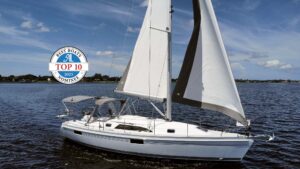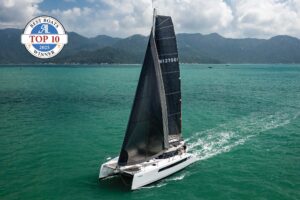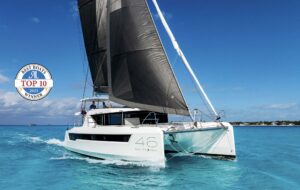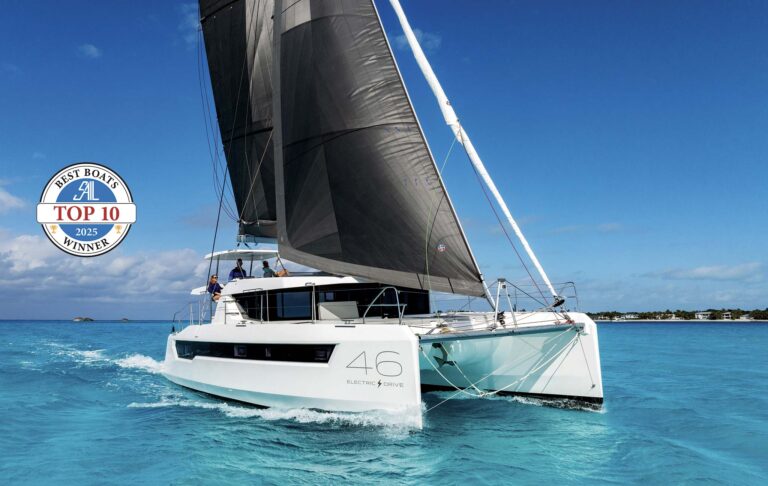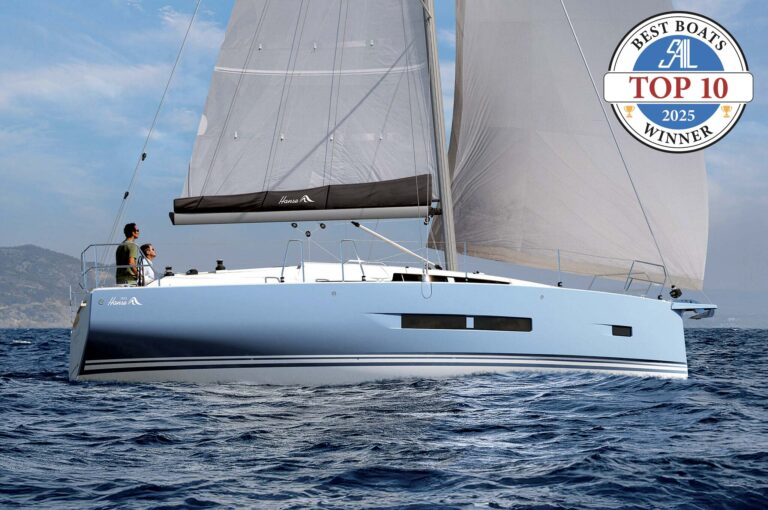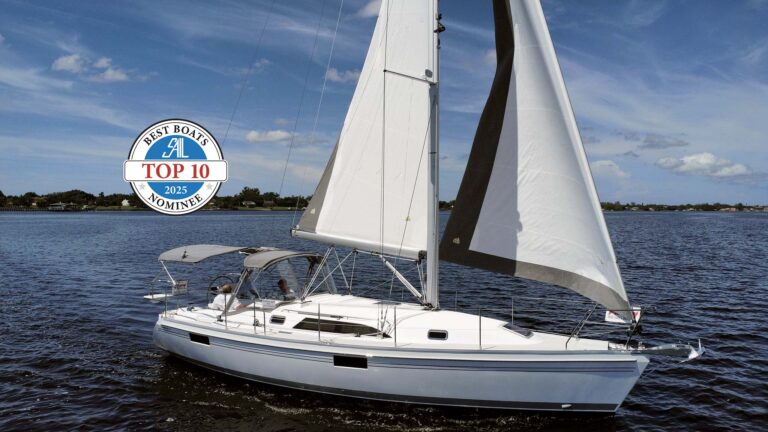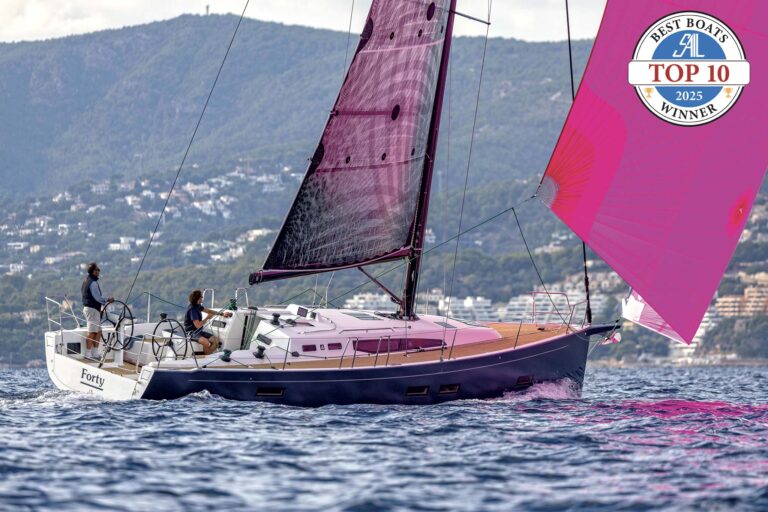
Back in 1998, when Finnish builder Nautor was acquired by Italian fashion magnate Leonardo Ferragamo, many Swan aficionados worried that the core values of this iconic breed of cruiser-racers would be lost in a blaze of Euro-finery. But the Italians have since done a superb job of injecting their own unique sense of style into the brand while also retaining Nautor’s strong emphasis on functionality and build quality.

Indeed, as I stepped aboard Lionessa, hull #1 in the Swan 66 line, just introduced to North America this summer, what struck me most was how she recalled older Swans I have sailed upon. The clean, elegant lines of the topsides and deck, the acres of honey teak joinery below, the safe, secure feeling of being inside a bombproof Finnish sailing machine: like Proust inhaling madeleine fumes, I reveled in these familiar sensations.
We enjoyed a spectacular sail that afternoon. Clawing through the throng of journalists aboard, I seized the wheel as we beat out of a sun-sparkled Narragansett Bay into a moderate southerly sea breeze. Sailing angles were gratifyingly tight. Pinching at a 22 degree apparent wind angle, Lionessa slipped cleanly through the mild chop at a little over 7 knots, and was fully powered up making better than 9 knots at an AWA of 28 degrees.
Off the wind, flying her bold red asymmetric spinnaker, she surged back up the bay with a will, floating along at 7.5 knots before a true wind of just 8. The feel of her helm, at all times, was moderate, not super-light, and firm, with just the right amount of feedback.

In the old days, of course, sailing a Swan like this would have involved messing around with innumerable lines and a forest of winches. These days what you get is an array of buttons, many of them within easy reach of the helm. All lines are controlled by hydraulic or electric motors and are neatly hidden inside spars or under the deck. The working cockpit aft, with its twin carbon wheels and open transom, is a study in modern efficiency. The social cockpit amidships, with its large fixed table and perfectly pitched backrests, is both spacious and comfortable.
The boat’s construction, I found, is absolutely contemporary. Back in the day, as sleek as they looked, Swans were unforgivingly solid, with very solid laminates and lots of solid wood below. This, not surprisingly, made for a heavy boat. Lionessa is positively svelte by comparison. Though her vinylester-skinned hull laminate is solid below the waterline, everything above is cored with foam, with quite a bit of carbon fiber blended into the structural bulkheads, stringers, floors and deck beams. Her rudder is entirely carbon, with a carbon stock, as are her spars. Belowdecks, the luscious book-matched teak joinery is but a veneer glued over lightweight cored composite panels.

The layout is quite variable. For one thing, you can order a Swan 66 in either an FD (flush deck) configuration, like Lionessa, or as an S (deck saloon) model. I rather prefer the FD boat, precisely because its lines strongly recall those of earlier Swans. The deck, in fact, is not perfectly flush, but functionally so, as the slim wedge of the full-length cabinhouse, so evocative of Swans past, is visually noticeable, but not physically apparent when you are actually working the deck.
The S model, by comparison, carries a bolder imprimatur of Italian styling. The deck is truly flush from the stem as far back as the mast, then comes the raised blister of the saloon deckhouse, which blends seamlessly into one large unitary cockpit that inhabits the back third of the boat. Down below, you’ll find the saloon itself is not raised. The large saloon windows no doubt do let in a lot of light, but unless you are tall, they’ll do little to expand the view from within. The interior trim is also more Euro contemporary, with less teak and more open stark-white surfaces.
Aesthetics aside, the biggest difference between the two models is that the S boat has a large dedicated dinghy garage under the cockpit. Depending on your prejudices when it comes to storing tenders, this may or may not be a dispositive feature.
Lionessa, I learned from her skipper, Andy Quarterman, is co-owned by two large active sailing families who take turns enjoying her. The boat’s accommodation plan, consequently, maximizes berth space. Instead of one super-sized master stateroom suite aft spanning the breadth of the boat, there is a smaller stateroom with a Pullman double berth to port and a nifty passage cabin with two bunk berth singles to starboard. The two share a generous head compartment between them.
Forward of the saloon there is a guest stateroom to port, again with a Pullman double, and another to starboard, with one dedicated single berth and a clever fold-down berth above it. Each of these cabins has its own rather compact head. Right forward in the peak, there is a separate crew’s quarters with its own head.
Lionessa’s two families have used their boat hard and well. According to Quarterman, who has managed the vessel since it was in build, she has cruised some 30,000 miles since being launched in 2008. She has, until now, spent her summers in the Baltic and her winters in the Med and has twice competed at the Swan Cup, held each September in Sardinia, with mostly family crews aboard.
If you ask me, it sounds a rather ideal existence—both for cruising sailors who like a whiff of competition from time to time, and for a large, comfortable performance cruising boat such as this.

